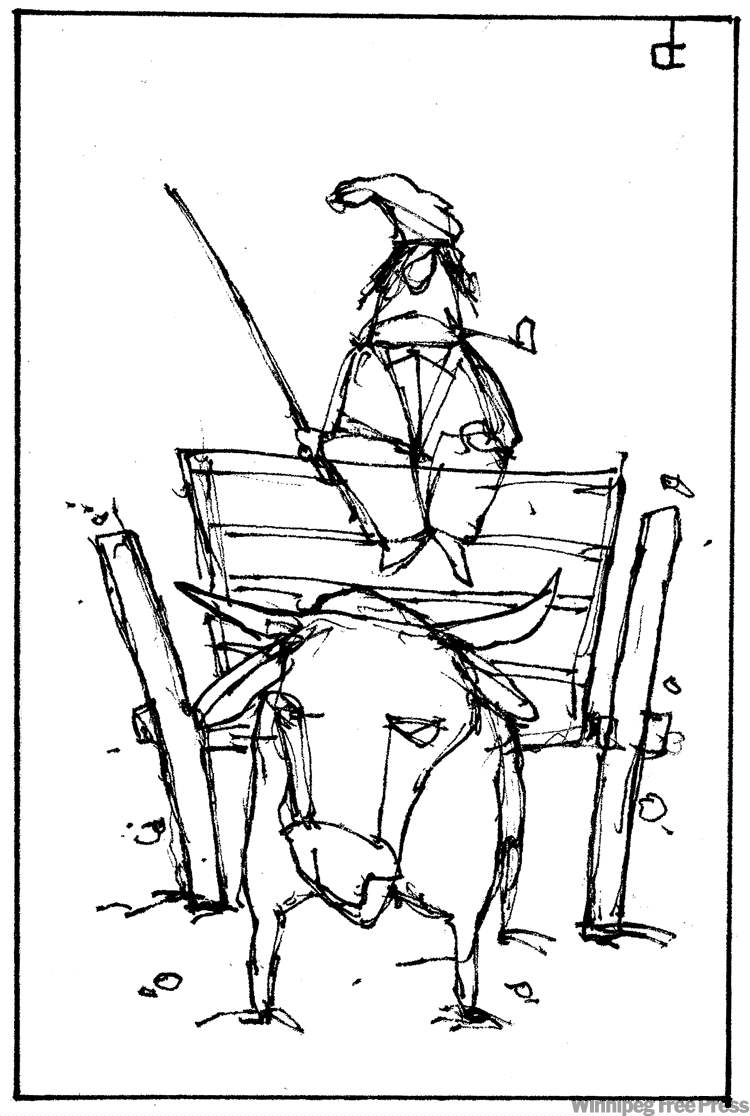Walking in a city of cars
Advertisement
Read this article for free:
or
Already have an account? Log in here »
To continue reading, please subscribe:
Monthly Digital Subscription
$0 for the first 4 weeks*
- Enjoy unlimited reading on winnipegfreepress.com
- Read the E-Edition, our digital replica newspaper
- Access News Break, our award-winning app
- Play interactive puzzles
*No charge for 4 weeks then price increases to the regular rate of $19.00 plus GST every four weeks. Offer available to new and qualified returning subscribers only. Cancel any time.
Monthly Digital Subscription
$4.75/week*
- Enjoy unlimited reading on winnipegfreepress.com
- Read the E-Edition, our digital replica newspaper
- Access News Break, our award-winning app
- Play interactive puzzles
*Billed as $19 plus GST every four weeks. Cancel any time.
To continue reading, please subscribe:
Add Free Press access to your Brandon Sun subscription for only an additional
$1 for the first 4 weeks*
*Your next subscription payment will increase by $1.00 and you will be charged $16.99 plus GST for four weeks. After four weeks, your payment will increase to $23.99 plus GST every four weeks.
Read unlimited articles for free today:
or
Already have an account? Log in here »
Hey there, time traveller!
This article was published 30/12/2010 (5434 days ago), so information in it may no longer be current.
When Winnipeg was a young city 125 years ago, Main Street and Portage Avenue were deliberately wide, not because city planners anticipated a need for eight lanes of automobile traffic, but because of the needs of the ubiquitous Red River carts. They travelled in groups in a wide echelon to avoid ambush and the deep ruts each cart left in its wake. It was a safety issue, in other words.
Today, however, the wide roadways are a pedestrian’s nightmare as people on foot scramble nervously across eight lanes of traffic, hoping to make it to the other side before the lights turn. The vast majority are successful, if a little out of breath.
Although the city has been making strides in accommodating pedestrians and cyclists through traffic-calming barriers, active transportation paths and other measures, those who rely on two legs to get around still face formidable challenges in the age of four wheels. In the last 10 days alone, three people on foot have been killed and three injured in collisions with automobiles.

More than 4,000 Canadian pedestrians, including 166 in Manitoba, were killed crossing a street between 1992 and 2001, according to Transport Canada. Another 142,515 were injured, including 5,726 in Manitoba. Most, if not all, were preventable.
Although car-pedestrian accidents are up this year in Winnipeg over the last two years, it’s not clear that it’s part of a rising trend. They happen with enough frequency here and across Canada, however, that some cities are taking more aggressive measures to improve safety.
Toronto recently adopted a “Pedestrian Charter” that claims, among other things, that it supports a walking environment; police have cracked down on pedestrian scofflaws and the province, like Manitoba, has prohibited the use of hand-held devices while driving.
In Montreal, which some commentators have dubbed the jaywalking capital of Canada, police write tickets for those who cross the street illegally. They operate two pedestrian-safety campaigns annually, with special attention for students and the elderly, who statistics show are most at risk. City engineers have also extended crossing times at big intersections.
Montreal police claim the measures are working, citing a decline in both injuries and fatalities over the last few years.
The problem in Winnipeg and other cities today is many newer streets were built for cars with little or no regard for pedestrians, cyclists and people in wheelchairs. (There is no more frightening sight than a lonely wheelchair-bound person struggling along a busy road because there is no sidewalk.)
According to the American website Transportation for America, the streets of major cities today are “dangerous by design.” It calls for the embrace of “complete streets,” which accommodate active transportation while “reducing crossing distances and installing trees and crosswalks to make walking and biking safer and more inviting.”
As mentioned, the City of Winnipeg is making progress on some of these issues, but there are still too many large and busy intersections that require nerves of steel to cross. Many of them don’t appear to allow enough time for pedestrians to cross, particularly the elderly and those in wheelchairs.
And while Montreal may hold the title, Winnipeg must be a close second when it comes to jaywalking, even across eight lanes of speeding traffic. Nor is it unusual to witness pedestrians stepping into a crosswalk without checking to ensure it’s safe.
Motorists need to be more careful, but pedestrians must also follow that old saw about looking twice. Defensive walking or cycling is an absolute necessity in a big city, but too many people are strolling around with earphones, cellphones or other digital devices that can be a dangerous distraction.
The Red River cart is long gone, but safety is still everyone’s business. More so, in fact, than ever.

